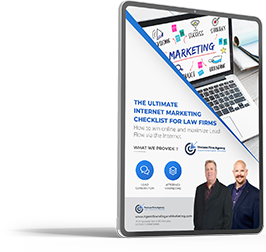
Marketing is an important part of any business, no matter what type of company you’re running. Many insurance agencies these days focus on sales, which in itself isn’t a bad thing. After all, when it comes down to it, we all care about the bottom line and sales is what keeps the numbers up. However, that doesn’t mean that agents should ignore the marketing aspect of business. Marketing is about communicating the value of your product or service to your potential customers. But insurance is a tricky subject – how can you fully market insurance products and services? The thing to remember is, more than just policies and contracts, insurance agents and agencies are also about people. You aren’t just marketing your products, but also your insurance agency.
Customers want to build a relationship with their insurance agents and agencies. They want to know that they can trust you, the advice you give, and that you will be there when they need you. Marketing can help you do this. With marketing, you can craft a message that you can use to reach out to people, to tell them who you are and why they should work with you. So it’s obvious you need marketing, and to start you need a plan, or at least know where to begin.
In this series of blog posts, we’ll take a look at the best ways you can market your insurance office. In Part 1, we’ll look at three things: setting goals, finding the right market, and how to best reach out to your market.
What Are Your Goals?
The very first thing you should consider when marketing your insurance office is your goals. Of course, you might think, “Well, I want to get more customers.” Of course, that’s every business’ goal. However, generic goals won’t help you. Why? Because it doesn’t give you any focus, drive, or a target you can hit. That’s why you should set some S.M.A.R.T. goals. This stands for:
Specific – Use real numbers, from “20% increase in sales” or “10 leads that turn into clients”
Measurable – Is there a way to track your goals through real, hard numbers?
Attainable – It’s great to have lofty goals, but make sure you can reach them. Don’t try to set goals that are impossible to achieve.
Realistic – Take a look at your team and your capabilities. Can you really achieve your goals based on your current situation?
Time-bound – You need a time limit for your goals. When do you want to achieve them?
Aside from just being a “smart” thing to do, S.M.A.R.T. goal allow you to focus your resources on goals you can reach, and motivate you to take action.
Who Is Your Target?

Next, any good marketing plan should have a target, that is, who are you reaching out to. In marketing, this is usually known as your target market. Unless you have unlimited resources, it would be impossible to target everyone in your state. Of course, as an agent, you don’t need to target every household in your state equally – you probably want to start with people in your area and that’s already a first step. But, you need to go further than this – do you want to target younger people or the older generation? Male or female or a combination of the two? White collar or blue collar or a combination of the two? What do they do? Where do they work? These are some things you want to answer to create your ideal buyer profile. By creating an ideal customer or buyer profile, you can then tailor your message to appeal to those people. That way, you can use your resources to reach out to the right people – people who want your products and services and can help you attain your goals.
You might even want to go further and create buyer personas. Buyer personas are fictional profiles of the segment of people you want to target. Rather than giving them generic titles like “Segment A” or “Millennial College Students”, you can even give them real names like, “Milly Millennial” or “Professional Pete.” When you create your buyer persona, you can make them sound like real people, with their own goals, achievements, and problems. Why do this? It helps create a better picture of who you want to reach out to and allow you to relate to them as people. While we want to tailor our marketing messages to specific groups, we still need to remember they are still people.
{{cta(‘7267e964-fe68-49b5-b154-749a7cb89f30’)}}
How Are You Reaching Out to Them?
You might think that at this point, you should start crafting your message. While you should definitely think about that, another question you should be asking is how do you want to reach them? Of course, there’s traditional media – print, TV, and radio ads. All forms of traditional media are still very useful these days, but there is an alternative – digital or online media, particularly social media.
The great thing about social media is that it’s practically free. You can create your own Facebook account, Twitter handle, G+, and YouTube page without paying anything. Of course you could use paid strategies as well, but for the most part, social media doesn’t cost anything. Also, consider this: 78% of the US population has some type of social meida access, so that’s a lot of people you could potentially reach out to, including the coveted Millennial generation. You can easily spread your message at little cost, and gain more customers for your insurance agency by using this channel.
These first steps can help you start marketing your insurance office in the right way. By creating S.M.A.R.T. goals, defining your target audience, and finding the best ways to reach out to them, you can begin to form a marketing plan than can help you find more potential customers and increase your business.
In Part 2, we will take a look at the next steps to help you craft your message and reach out to people, as well as finds ways for them to come to you.
{{cta(‘7267e964-fe68-49b5-b154-749a7cb89f30’)}}






